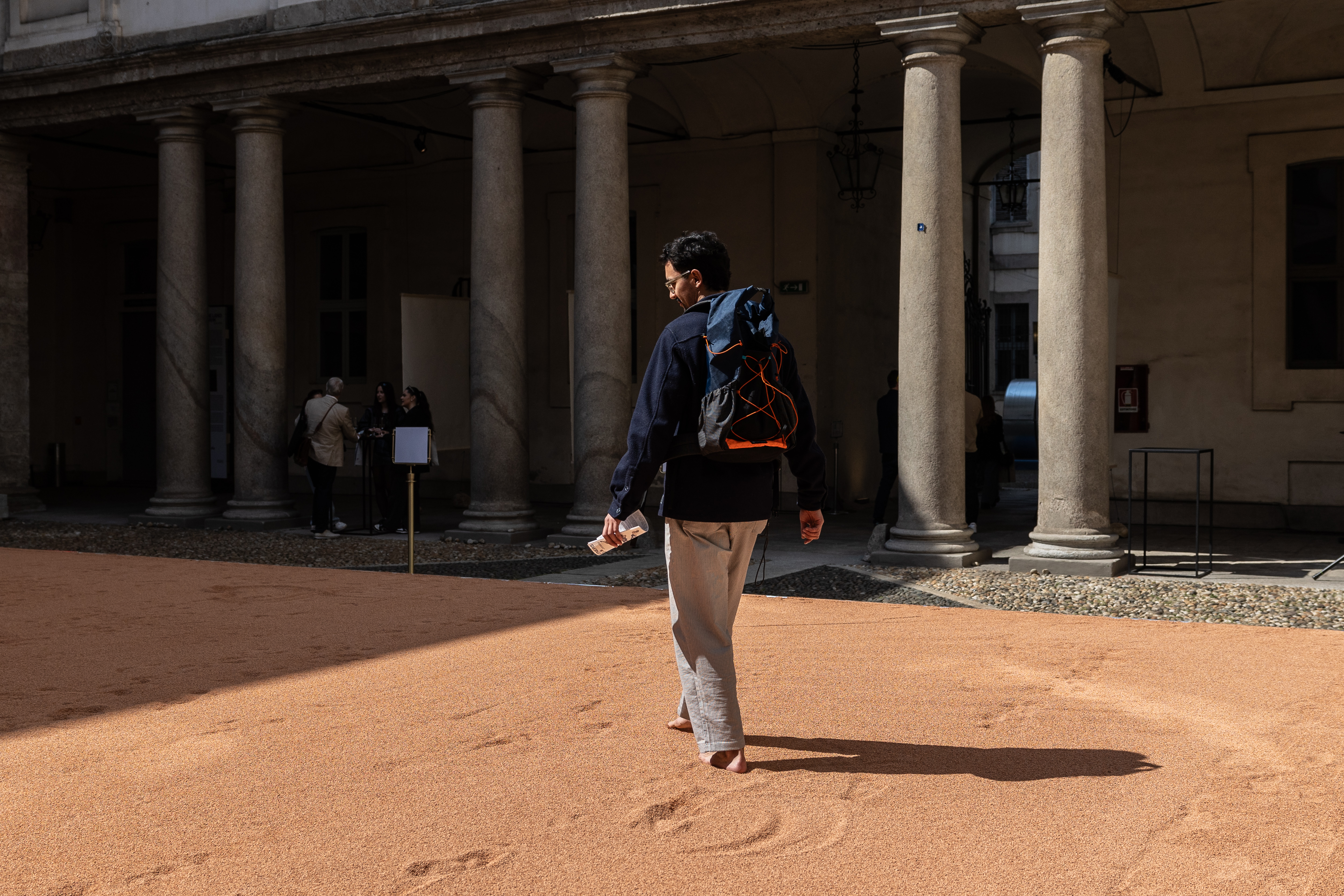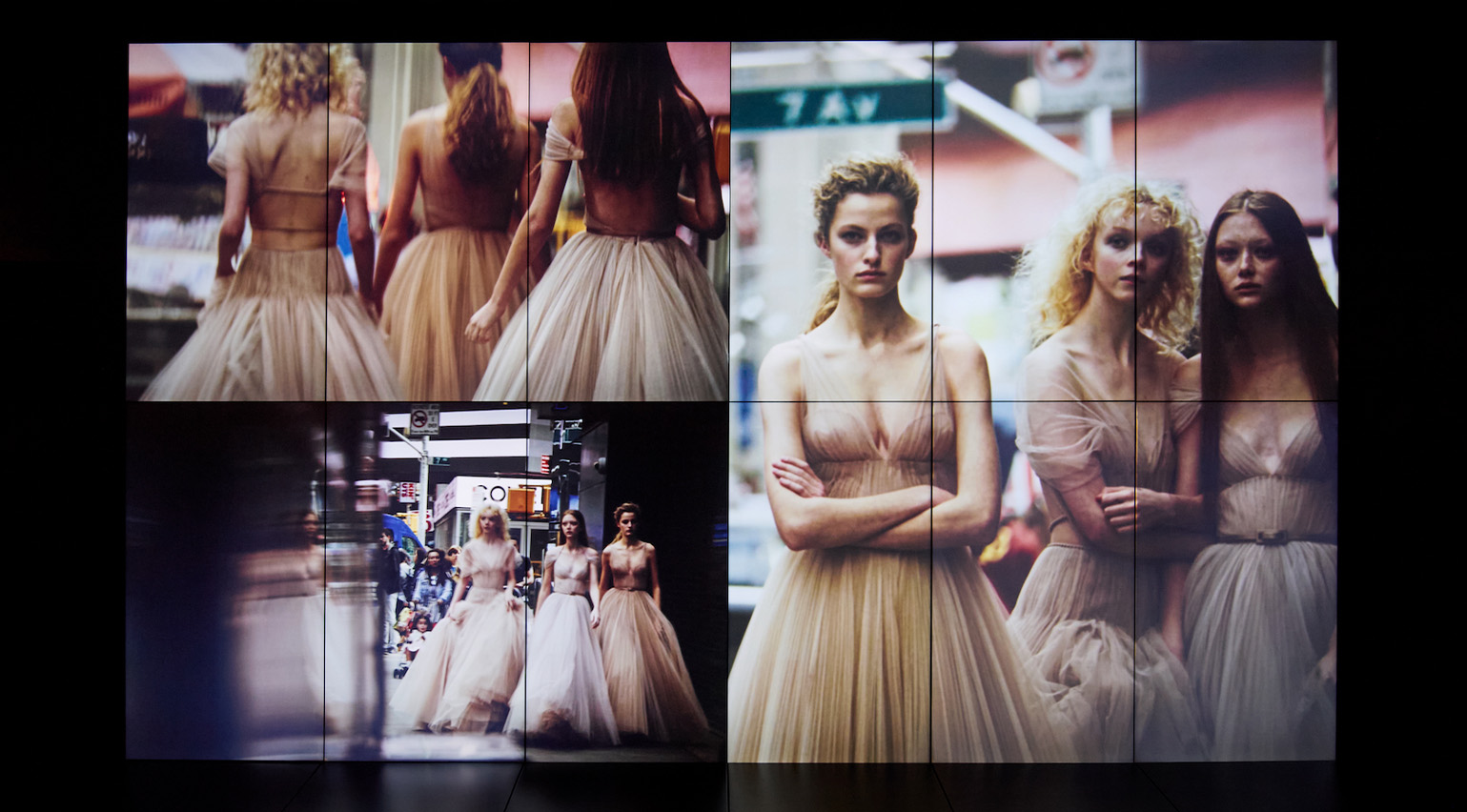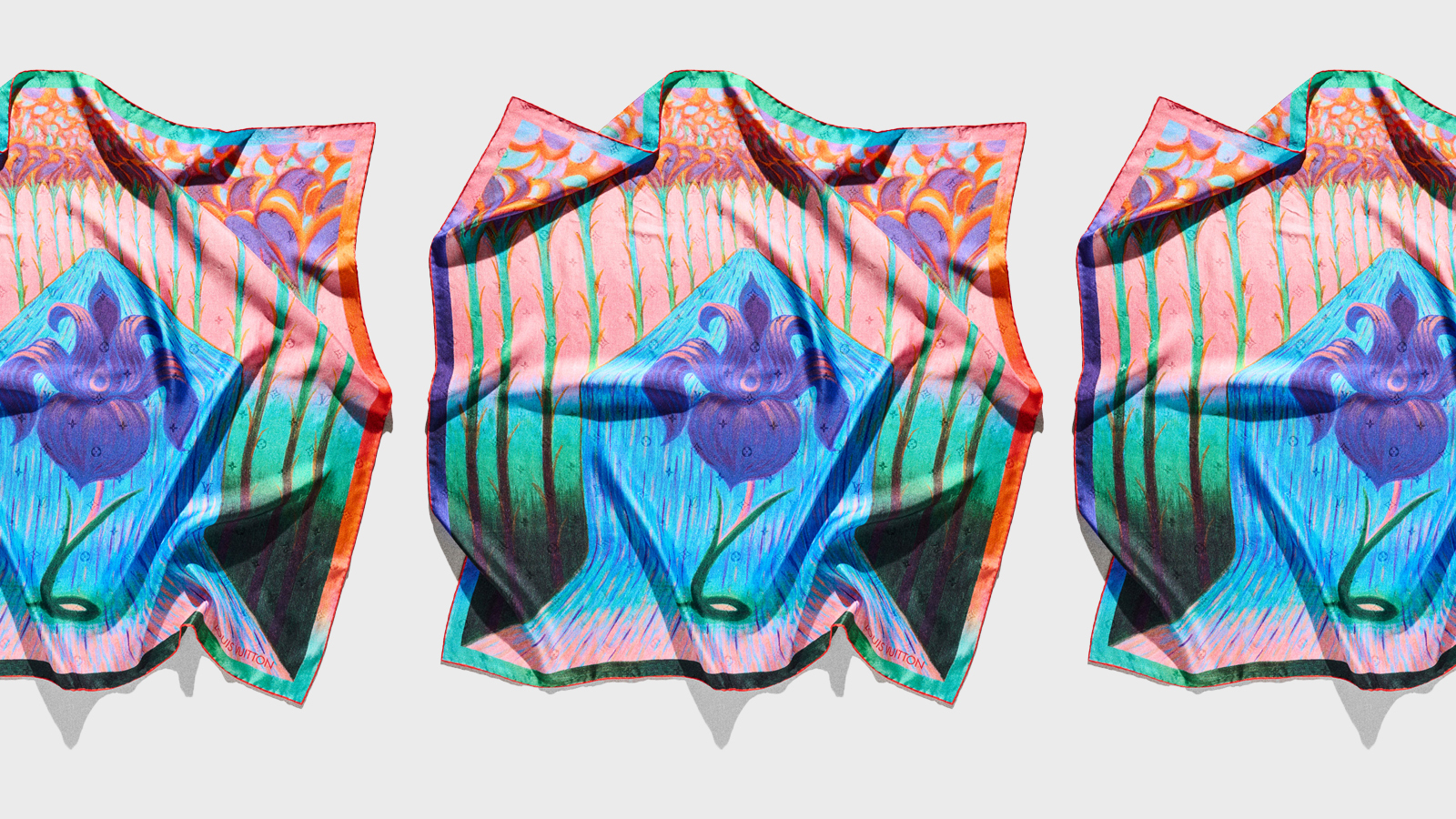Frank Gehry’s Louis Vuitton handbags see fashion meet architecture
Frank Gehry and Louis Vuitton’s limited-edition sculptural bags tell a tale of sharp design and precise craftsmanship. Here, the architect tells the story behind the project

When Bernard Arnault, the chairman of French luxury goods conglomerate LVMH, was searching for an architect to create a building to house his vast private art collection, he remembered being struck by the fluid forms of Frank Gehry’s 1997 Guggenheim Museum in Bilbao, Spain. In 2001, the pair met and, by 2006, the plans for Fondation Louis Vuitton – named for the Parisian fashion house at the centre of the LVMH empire – were announced, marking the first collaboration between Arnault and the Canadian-American architect.
Eight years later, in 2014, the Fondation Louis Vuitton opened its doors in the Jardin d’Acclimatation, a historic amusement park in Paris’ Bois de Boulogne. A spectacle in scale and form, the 126,000 sq m gallery was described by LVMH as a ‘transparent cloud’, its shimmering, overlapping ‘sails’ appearing as if preserved in perpetual movement.
Frank Gehry’s architecture-inspired handbags for Louis Vuitton

The ‘Capucines Mini Blossom’ bag is a tribute to the Les Extraits Murano glass perfume bottles that Gehry designed for Louis Vuitton in 2021. The bottle’s floral stoppers are here reworked as majestic scaled-up petals in glass-like resin, delicately positioned on the front of the bag
A decade on, Gehry remembers walking through the Jardin d’Acclimatation with Arnault with ‘tears running down my face’. ‘The site was so filled with history, and the project was so modern,’ he says. ‘I felt incredibly honoured that Bernard Arnault would trust me with such a rare project.’
He is speaking on the occasion of a new collaboration with Louis Vuitton, which sees the architect design a limited-edition collection of handbags for the house. Smaller in scale but no less architectural in scope, the 11-piece collection draws inspiration from some of Gehry’s most notable designs while building on the architect’s initial handbag for the maison’s 2014 ‘Celebrating Monogram’ project. Called ‘Twisted Box’, its hard shell twisted in the architect’s unorthodox style, the bag is now available in embossed leather rather than the original canvas.
‘You have to work within the materials’ limits, but Louis Vuitton was able to produce things that were beyond my wildest dreams’
Frank Gehry
The new collection also features more architectural styles, like the angular ‘Capucines MM Concrete Pockets’, which recalls the concrete exteriors of Gehry’s most memorable buildings, or a shell-like iridescent Plexiglas model that evokes the façade of Gehry’s distinctive Museum of Pop Culture in Seattle. Other creations feature fish and crocodile motifs in an echo of interior fixtures Gehry has created for various buildings (the crocodile appears in London’s Sexy Fish restaurant; the fish nods to lamps at Fondation Louis Vuitton), or reference the glass toppers Gehry created for Louis Vuitton’s Les Extraits perfumes.
‘It’s not so much about making sure that the original vision is translated,’ says Gehry. ‘Rather, it’s about working with the team to create the object of desire together. The craftspeople working on the bags have constraints in what the leather or materials can do. You have to work with those limits and pick and choose where to push the boundaries… [but] they were able to produce things that were beyond my wildest dreams.’

The ‘Capucines MM Concrete Pockets’ bag features a calfskin exterior that faithfully recreates the concrete textures and tones of Gehry’s buildings, thanks to a cutting-edge 3D screenprinting treatment
The project also saw the architect work with his daughter-in-law, Joyce Shin Gehry, who is also a colleague at Gehry Partners. ‘Joyce is very talented and has a great eye,’ he says. ‘She started making all sorts of bags – playing with different themes and shapes. Working inside the “Capucines” shape [one of Louis Vuitton’s most enduring handbag styles] meant that we started exploring texture, colour and graphics more than we might have if we were starting from scratch.’
Wallpaper* Newsletter
Receive our daily digest of inspiration, escapism and design stories from around the world direct to your inbox.
The idea, says Gehry, was that each handbag had a unique story to tell. ‘What Louis Vuitton brings to the table is a deep respect for the artistic process,’ he says. ‘We try things, we see what works and what doesn’t.’ As for the exactitudes of each bag’s construction, unlike the painstaking process of creating the Fondation Louis Vuitton – which involved the placing of 3,600 panels of curved glass – Gehry largely left it to the expertise of the Louis Vuitton atelier. ‘They made everything look effortless to me.’
A version of this article appears in the April 2024 issue of Wallpaper* available in print, on the Wallpaper* app on Apple iOS, and to subscribers of Apple News +. Subscribe to Wallpaper* today.
Set design: Thomas Conant. Photography assistant: Matt Bramston.
Jack Moss is the Fashion Features Editor at Wallpaper*, joining the team in 2022. Having previously been the digital features editor at AnOther and digital editor at 10 and 10 Men magazines, he has also contributed to titles including i-D, Dazed, 10 Magazine, Mr Porter’s The Journal and more, while also featuring in Dazed: 32 Years Confused: The Covers, published by Rizzoli. He is particularly interested in the moments when fashion intersects with other creative disciplines – notably art and design – as well as championing a new generation of international talent and reporting from international fashion weeks. Across his career, he has interviewed the fashion industry’s leading figures, including Rick Owens, Pieter Mulier, Jonathan Anderson, Grace Wales Bonner, Christian Lacroix, Kate Moss and Manolo Blahnik.
-
 Dimoremilano and Loro Piana channel 1970s cinema in decadent Milan display
Dimoremilano and Loro Piana channel 1970s cinema in decadent Milan displayAt Milan Design Week 2025, Dimorestudio has directed and staged an immersive, film-inspired installation to present new furniture and decor for Loro Piana
By Dan Howarth Published
-
 The new Google Pixel 9a is a competent companion on the pathway to the world of AI
The new Google Pixel 9a is a competent companion on the pathway to the world of AIGoogle’s reputation for effective and efficient hardware is bolstered by the introduction of the new Pixel 9a, a mid-tier smartphone designed to endure
By Jonathan Bell Published
-
 In Milan, MoscaPartners presents a poetic exploration of ‘migration’
In Milan, MoscaPartners presents a poetic exploration of ‘migration’Alongside immersive work by Byoung Cho, MoscaPartners’ Milan Design Week 2025 display features an accessible exhibition path designed for visually impaired visitors
By Cristina Kiran Piotti Published
-
 ‘He immortalised the birth of the supermodel’: inside Dior’s career-spanning retrospective of photographer Peter Lindbergh
‘He immortalised the birth of the supermodel’: inside Dior’s career-spanning retrospective of photographer Peter LindberghOlivier Flaviano, head of Paris’ La Galerie Dior, talks us through a new Peter Lindbergh retrospective, which celebrates the seminal German photographer’s longtime relationship with the French house
By Jack Moss Published
-
 Inside ‘De toutes beautés!’, the Louvre’s new exhibition narrating 10,000 years of beauty ideals through art
Inside ‘De toutes beautés!’, the Louvre’s new exhibition narrating 10,000 years of beauty ideals through art‘De toutes beautés!’ marks the beginning of a three-year partnership between the Louvre and L’Oréal Groupe. India Birgitta Jarvis reports on the show for Wallpaper*
By India Birgitta Jarvis Published
-
 ‘A hat is an alibi, a fabulous lie’: radical milliner Stephen Jones on his career-spanning new Paris exhibition
‘A hat is an alibi, a fabulous lie’: radical milliner Stephen Jones on his career-spanning new Paris exhibitionAs ‘Stephen Jones, Chapeaux d’Artiste’ opens at Paris’ Palais Galliera, the British milliner tells Wallpaper* about the transformative power of hats, the one designer he wishes he’d collaborated with, and his lifelong love of Paris
By Jean Grogan Published
-
 Louis Vuitton drafts contemporary artists to use the house’s silk ‘carré’ scarf as a colourful canvas
Louis Vuitton drafts contemporary artists to use the house’s silk ‘carré’ scarf as a colourful canvasIn a tradition which dates back to the 1980s, Louis Vuitton has asked five artists to reimagine its silk carré scarf using floral motifs
By Jack Moss Published
-
 Maude’s Brâncuși-inspired sex toys go on display in a new Paris exhibition
Maude’s Brâncuși-inspired sex toys go on display in a new Paris exhibitionMaude’s design-led vibrators are now on display at Musée des Arts Décoratifs in Paris, as part of ‘Private Lives: From the Bedroom to Social Media’. Brand founder Éva Goicochea talks to Wallpaper* about partnering with the museum and opening up cultural conversations around sex
By India Birgitta Jarvis Published
-
 For A/W 2024, the working uniform gets a futuristic spin
For A/W 2024, the working uniform gets a futuristic spinSculpted silhouettes, unexpected textures and plays on classic outerwear meet in the A/W 2024 collections, providing a twisted new take on city dressing
By Jack Moss Published
-
 The breathtaking runway sets of S/S 2025, from beanbag animals to a twisted living room
The breathtaking runway sets of S/S 2025, from beanbag animals to a twisted living roomWallpaper* picks the best runway sets and show spaces of fashion month, which featured Bottega Veneta’s beanbag menagerie, opulence at Saint Laurent, and artist collaborations at Acne Studios and Burberry
By Jack Moss Published
-
 Watch: Jamie Dornan takes a bath in Le Corbusier’s villa for Loewe Perfumes
Watch: Jamie Dornan takes a bath in Le Corbusier’s villa for Loewe PerfumesJamie Dornan stars alongside Sophie Wilde in the new Loewe Perfumes 2024 campaign, shot by David Sims in Le Corbusier’s Villa Savoye
By Hannah Tindle Published